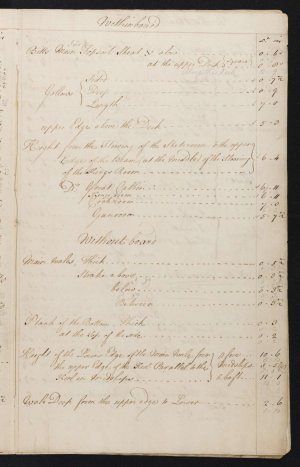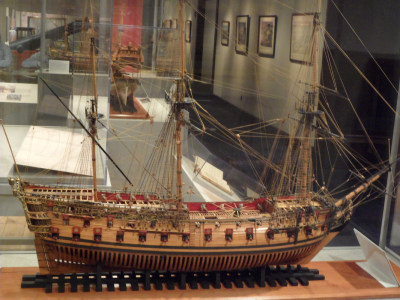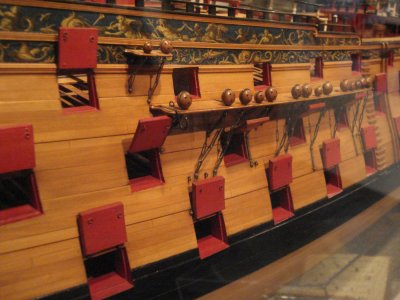I see that the Caroline (1749) shows a split whale
Hi Jeff
I suspect there was no Admiralty orders to make the change but rather an engineering change to strengthen the hulls with a more robust wale. That said, I am guessing it was a transitional thing.
These are called out in the contracts, but no mention of painting is given. If enough contracts can be studied with the 17th and 18th centuries, I suppose a firmer time frame can be found at least for the split wales versus the broader single wales.
Allan
For comparison from
Cumberland (80) 1695

From the
Aurora 1776 contract
MAIN WALES ……. The main wales to be in 4 strakes in breadth, from upper to lower edge
3 ft 6 ins, & 5½ ins thick each, the two lower strakes to be locked into each other, with hook & butt wrought anchor stock fashion of such length & the butts properly disposed, so as to give the strongest shift to the ports, & to each other with plain seam in the Middle, the thickstuff for the wales and all other parts of the ship to be sawn to it thickness at least six months before it is wrought on the ship. ~~~~~~~~~~~~~~~
THICKSTUFF under To have 2 strakes of thick stuff under the Main Wales: the upper edge
MAIN WALES of the upper strake to be 4 ins thick, the lower edge of the lower strake to be 3 ins thick. ~~~~~~~~~~~~~~~~~~~~~~~~~~~~
THICKSTUFF upon To have One Strake upon the Main Wales of 4 ins thick and 11 ins broad MAIN WALES the lower upper edge of the strake upon that to be 3 ins thick and to wear off to 2 ½ ins at the lower sill of the upper deck port and 2 ¼ ins at the top
of the side or the lower edge of the sheer strake.
I believe the AOTS book for Caroline is correct if it shows split wales. The John Clevely painting of the yacht
Caroline launched in 1750 clearly shows split wales as does the Admiralty drawing below from 1749 and the contract seems to confirm it.
Caroline
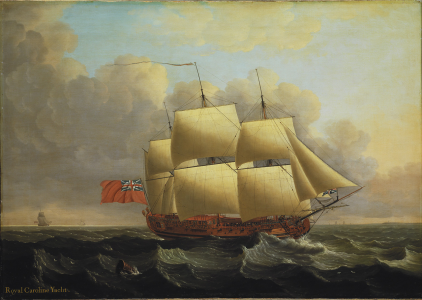
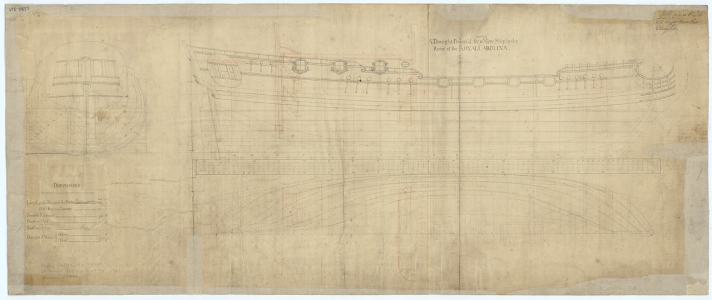
Her contract shows the 5.5" thickness of the wales, the 3.5" thick strakes above, BETWEEN, and below indicating a split wale.
